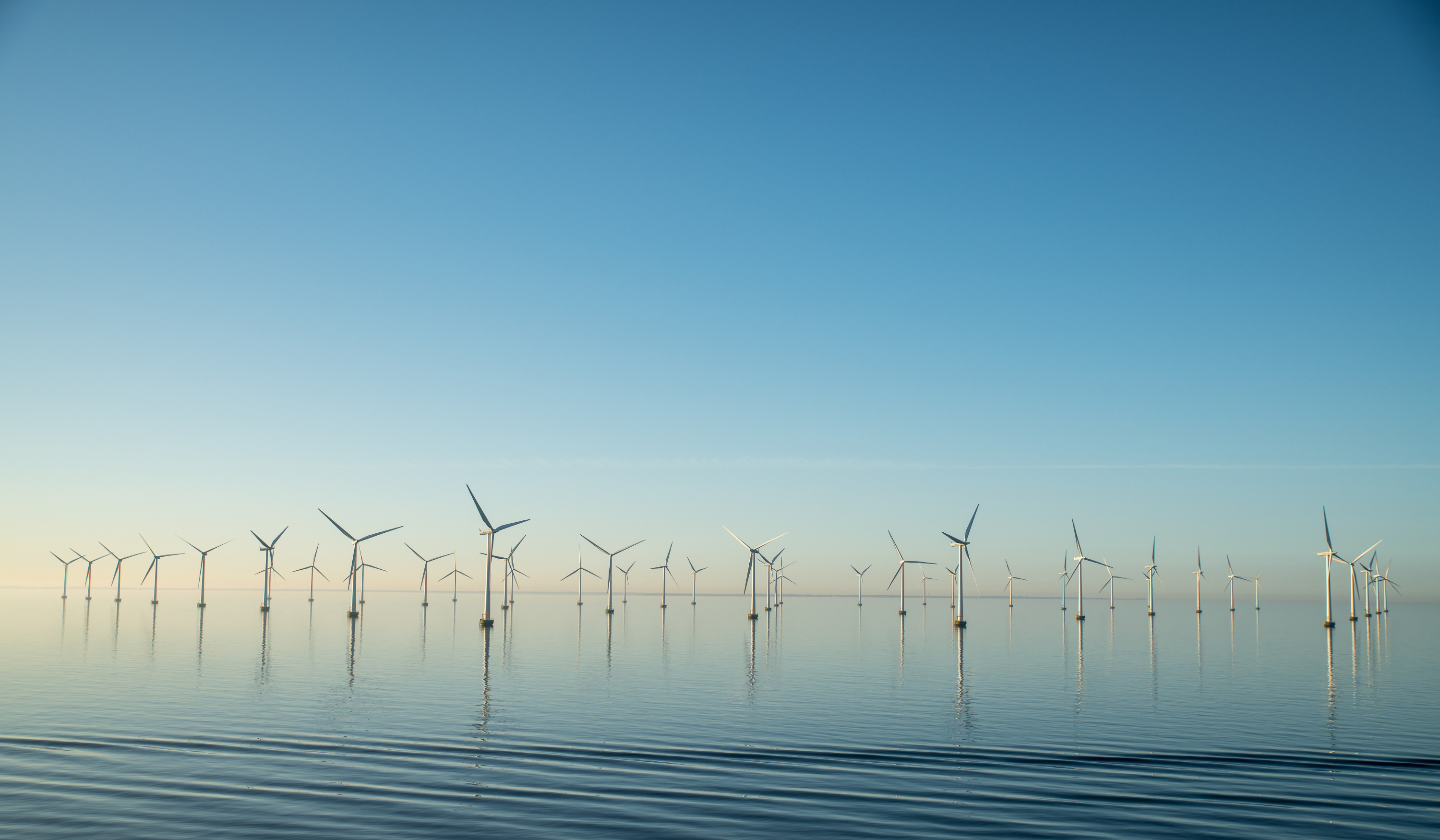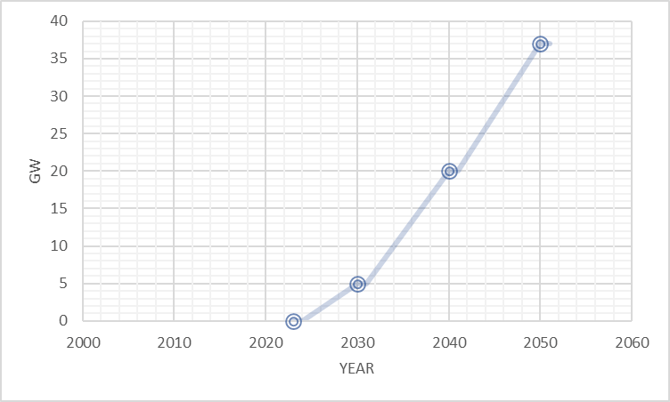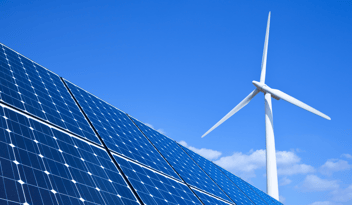
Founding Ireland’s renewable energy future
May 2023 saw Ireland enter the global wind energy market, having delivered its first ever offshore wind auction - ORESS 1 (Offshore Renewable Electricity Support Scheme). A remarkable milestone for the country’s future in renewable energy, the auction awarded 3.1 GW of capacity across four projects, namely Codling Wind Park, Dublin Array, NISA - North Irish Sea Array, and Fuinneamh Sceirde Teoranta, (Skerd Rocks). This capacity constitutes over half of the country’s offshore wind target; to install 5GW by 2030, with another 2GW of floating capacity to at least be in development by that date.
Ireland’s TSO (Transmission System Operator), EirGrid, ran the auction which achieved a competitive average price of 86.05€/MWh. This was lower than anticipated with the Maximum Offer Price Considered (MOPC) by EirGrid being set at 150.00 €/MWh. The competitive price is positive news for Ireland’s electricity consumers who will ultimately benefit from this lower cost of renewable energy at source, considering the average price of wholesale energy over the previous 12 months was soaring above €200/MWh.
The successful projects are estimated to power over 2.5 million Irish homes. Given there are circa 2.1 million domestic dwellings in the country, this success goes a considerable way towards Ireland successfully meeting its Net Zero targets.
Government Targets for Offshore Installed Capacity

A confident future
Although thoroughly ambitious and driven - evidenced by more than 70 offshore wind projects in the early phase of feasibility or planning - the Irish offshore wind sector has been lagging its British and European neighbours. With just one offshore project currently in operation at Arklow Bank (Phase 1), the determination of Irish developers and investors to progress the country’s sustainable energy resource has been growing for many years, hindered primarily by its regulatory environment which caused ambiguity and delays and has now undergone significant restructuring which thanks to collaboration of relevant Government Departments and State agencies working together with developers and stakeholders, via the Offshore Wind Delivery Taskforce.
The ORESS 1 awards have come in good time given the Irish renewables market has experienced uncertainties in recent years. This includes early commitments from a couple of international energy operators who abandoned projects in the Irish market to pursue easier global markets with well-defined timelines which are vital to justify ROI for such substantial investments.
ORESS II and beyond
With the ORESS I provisional results now public, we are seeing many developers taking this opportunity to review priorities and re-commence project developments which were largely paused in February 2023 in light of the release of the draft Offshore Renewable Energy Development Plan II (OREDP II) for consultation, followed shortly by the Phase 2 Policy Statement released in March 2023.
These policies have made it clear that the sector will need to reorganise and fit into a new plan-led approach for project development for ORESS II to be a success. Unlike its predecessor, ORESS II outlines that developers can no longer select their preferred offshore wind array locations - as was the case for ORESS 1 - and instead must compete to win Maritime Area Consent (MAC) which is only available within government specified ORE Designated Areas. Despite the market anticipating this plan-led approach, this news came as a surprise given the number of years it has taken to be confirmed. During the time in between, many developers have progressed with costly offshore project development in advance of achieving the relevant planning permissions.
To address grid limitations with this anticipated influx of green electricity, EirGrid is simultaneously progressing work to release 700MW within ORESS II across the south coast, including the provision of offshore grid transmission infrastructure. This again differs from ORESS I, and likely from subsequent auctions, where K2 Management understand that developers will be responsible for developing the offshore substation(s) and cabling, which will subsequently be transferred to EirGrid.
Overall, renewed confidence in Ireland’s offshore capabilities stems from the Government’s commitment to a National Strategy for Offshore Wind, due to be published in 2024. It is said that this will provide a roadmap for achieving 80% of the country’s electricity from renewable sources by 2030, while also illustrating strategies to support and maximise the stability of the energy supply chain.
.png?width=828&height=331&name=Image%20for%20Irish_Blog%20(Jun23).png)
Despite ESB and SSE’s projects not winning under ORESS I, both organisations have committed to finding alternative routes to the market in Ireland and will continue to develop Arklow Bank Wind Park and Oriel Wind Farm respectively. The auction has, therefore, also generated an immeasurable amount of confidence in this key market with lots of positive news. This includes EDF and Orsted joining Simply Blue and ESB respectively in pursuit of more than 6GW of new projects.
Likewise, a huge number of new offshore wind jobs have recently been announced by Ireland’s Minister for Enterprise, Trade and Employment, Michael Coveney. Most recently, Ireland and Germany also entered into a Declaration of Intent on Green Hydrogen recognising that Ireland is in prime position to support in reducing emissions through the export of green fuels produced in the country.
Overcoming the challenges
Alongside this optimistic future comes the inevitable challenges - none of which are exclusive to Ireland’s bid for a green energy future. Some of these challenges are consistent with those faced in the global offshore market, including the lack of offshore wind vessels and ongoing supply chain issues that are continuing to impact planning and construction timelines. As K2 Management have seen to date, the pinch point on the manufacture of Wind Turbine Generator (WTG) foundations will likely have a knock-on impact on the coming stages in Ireland’s renewable energy development.
Despite this, with progress we’ve seen to date we can all be confident that Ireland will overcome many of these challenges to deliver this ambitious Net Zero future, and the key to this success will be continued communication and collaboration across state bodies, industry experts and the local communities.
Written by Sorcha Versteeg, UK & Ireland Country Director, K2 Management




